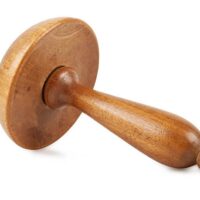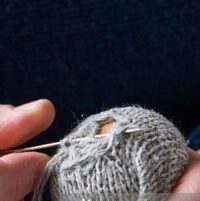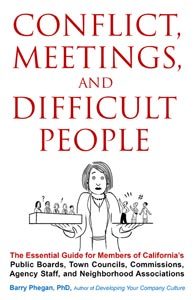 As a child I darned my socks using a mushroom darning spool, a darning needle (rounded point), and matching wool thread. Now, over 70 years later, I find myself well darned over by the medical profession. If it wasn’t for their constant patching, I’d be long gone.
As a child I darned my socks using a mushroom darning spool, a darning needle (rounded point), and matching wool thread. Now, over 70 years later, I find myself well darned over by the medical profession. If it wasn’t for their constant patching, I’d be long gone.
Patching started early with the neighborhood dentist, where I was an all-too-frequent visitor. There was no fluoridation and I would sometimes walk home from school using the saved public transport pennies to buy “lollies” (candy). Around age 10 a local doctor carefully dug an embedded grain of sand from my eyeball with a tiny spoon. Later, he cut a grape-sized cyst from my eyebrow. In high school, I broke my finger in a boxing match. It healed inside a plaster cast.
A Brush With Death
As a 19-year-old Army draftee, my appendix burst during field maneuvers. Antibiotics were not widely available then. Fortunately, the VA’s sulfanilamide drugs and my 19-year-old tenacious body, pulled me through, though the delirium-inducing infection had shrunken me to 95 pounds.
I don’t recall much happening medically for the next 40 years, though there were many simple little fixes such as orthotics for collapsing foot arches and the ongoing relationship with various dentists in Sweden, Canada, and the US for root canals, extractions, and crowns. But then accumulating years brought their issues, starting with two far-apart hernia operations in my early 70s. Then there was a non-age-related medical event when I fell chest-first onto a pyracantha stump. My symptoms were chest pain and a sudden loss of energy. The doctor’s verdict, pneumothorax. After she sucked the air out of the chest cavity, I was good to go.
Replacement Body Parts
Years of urban sidewalk running and madcap skiing, probably combined with the normal arthritis of aging, brought two knee replacements, six months apart. They were life changers. I could walk again but they ended tennis and running. Then eight years ago I had a small heart attack. Yes, they can be small.
 The surgeon declared it was too small for a stent and I was an unlikely candidate for a repeat occurrence. He was wrong. Five years later I experienced the delights (Not!) of arrhythmia. Your heart goes bonkers. You can’t find your pulse. You feel weird. Again, no stent, but now I’m on a daily statin and baby aspirin. A good friend gave me a tiny screwcap keychain container for my nitroglycerin pills — to be taken if I experience chest pain. It all seems so distant and unlikely.
The surgeon declared it was too small for a stent and I was an unlikely candidate for a repeat occurrence. He was wrong. Five years later I experienced the delights (Not!) of arrhythmia. Your heart goes bonkers. You can’t find your pulse. You feel weird. Again, no stent, but now I’m on a daily statin and baby aspirin. A good friend gave me a tiny screwcap keychain container for my nitroglycerin pills — to be taken if I experience chest pain. It all seems so distant and unlikely.
Last year, during Covid and before the vaccine, prostate surgery helped me sleep better. In early January next year, eyebrow and eyelid surgery will hopefully correct my shrunken field of vision. My ophthalmologist says that cataract surgery is probably three or four years away. Curiously and somewhat amusingly, the developing cataracts have significantly improved my vision, cutting my prescription in half, and giving me the youthful super-power of reading my cell phone without glasses. Yay!
Still Here
 So here I am, a medical patchwork — and very glad of it. It was so different in my grandparent’s day. My mother’s parents had seven children, two of whom died in their first year. It was one of my mother’s proudest moments when we three brothers all reached adulthood. I didn’t realize the significance of that, or how she must have dreaded my close brush with the Grim Reaper at age 19. The rapid medical advances of the last 70 years brought some remarkable statistics.
So here I am, a medical patchwork — and very glad of it. It was so different in my grandparent’s day. My mother’s parents had seven children, two of whom died in their first year. It was one of my mother’s proudest moments when we three brothers all reached adulthood. I didn’t realize the significance of that, or how she must have dreaded my close brush with the Grim Reaper at age 19. The rapid medical advances of the last 70 years brought some remarkable statistics.
In my adjoining town of Ross — which has one of the highest incomes in the country — the life expectancy is 92 years, extraordinary by any measure. While culturally we seem to be treading water or even sliding backward since the 1970’s, medically the change is breathtaking. Developing a Covid 19 vaccine in about 12 months was inconceivable without gene sequencing. And gene sequencing was unimaginable when Watson, Crick, and Franklin discovered the double helix of DNA in 1953.
A Long Life
My father died in his early 60s from dementia, my mother at 76 from several strokes. I expect to live into my 90s. Identifying and managing health conditions that could lead to terminal illness is a distinctive marker of modern medicine. Of course, diagnostics, surgery, and pills are just part of the story. The prescription for a long and satisfying life seems to be:
- Don’t be poor — have the resources to manage your health (think Ross).
- Eat healthily, exercise regularly, maintain low body weight.
- Be in a loving caring relationship, have friends – a social life.
- Keep a low-stress level – be grateful.
- Do things you are proud of.
I no longer darn my socks. Medically speaking, I’m now the darnee. Unlike my mother, I did not expect one of my children might die in childhood. That thought never entered my mind. Though I won’t be here to see it, I expect my four grandchildren will ring in the next century. As the speed of change accelerates, they will experience a society, and a medicine, quite inconceivable today. I hope they benefit from darning as much as I have — and more.
Happy Winter Solstice.
Barry
Add Your Name below to my list to know when I have posted a new blog.




